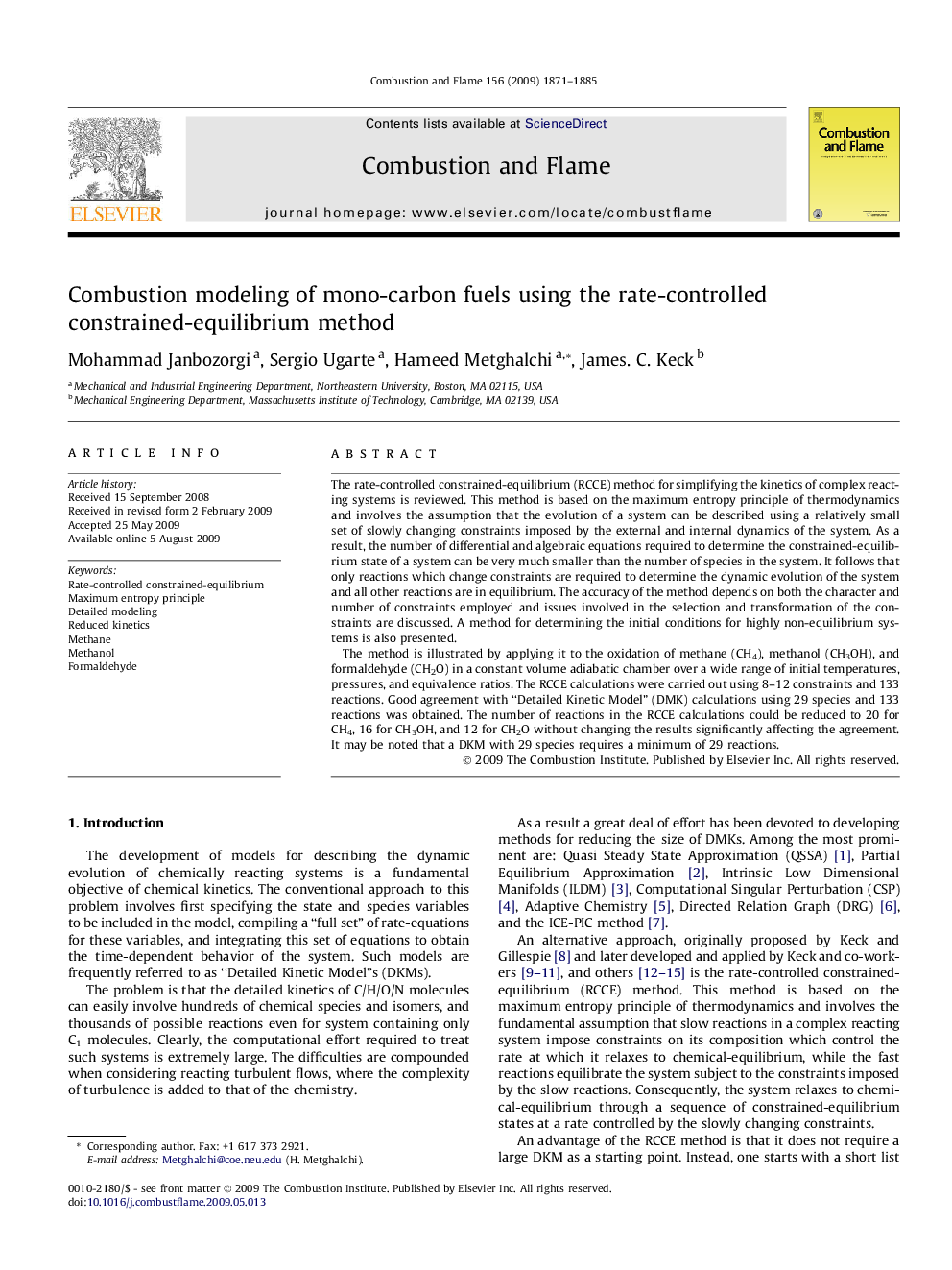| Article ID | Journal | Published Year | Pages | File Type |
|---|---|---|---|---|
| 166766 | Combustion and Flame | 2009 | 15 Pages |
The rate-controlled constrained-equilibrium (RCCE) method for simplifying the kinetics of complex reacting systems is reviewed. This method is based on the maximum entropy principle of thermodynamics and involves the assumption that the evolution of a system can be described using a relatively small set of slowly changing constraints imposed by the external and internal dynamics of the system. As a result, the number of differential and algebraic equations required to determine the constrained-equilibrium state of a system can be very much smaller than the number of species in the system. It follows that only reactions which change constraints are required to determine the dynamic evolution of the system and all other reactions are in equilibrium. The accuracy of the method depends on both the character and number of constraints employed and issues involved in the selection and transformation of the constraints are discussed. A method for determining the initial conditions for highly non-equilibrium systems is also presented.The method is illustrated by applying it to the oxidation of methane (CH4), methanol (CH3OH), and formaldehyde (CH2O) in a constant volume adiabatic chamber over a wide range of initial temperatures, pressures, and equivalence ratios. The RCCE calculations were carried out using 8–12 constraints and 133 reactions. Good agreement with “Detailed Kinetic Model” (DMK) calculations using 29 species and 133 reactions was obtained. The number of reactions in the RCCE calculations could be reduced to 20 for CH4, 16 for CH3OH, and 12 for CH2O without changing the results significantly affecting the agreement. It may be noted that a DKM with 29 species requires a minimum of 29 reactions.
